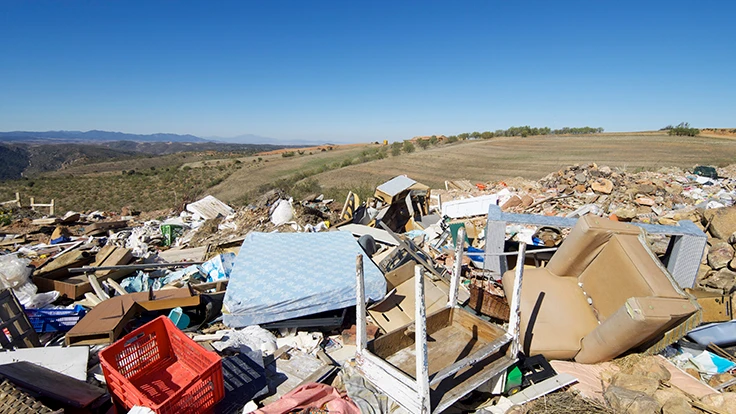
The U.S. Environmental Protection Agency (EPA) announced the final rules for new, existing and modified landfills. According to the rules, landfills will begin capturing and controlling landfill gas emissions at levels that are one-third lower than current requirements, updating 20-year-old standards for existing landfills.
Combined, the final rules are expected to reduce methane emissions by an estimated 334,000 tons a year beginning in 2025—equivalent to reducing 8.2 million metric tons of carbon dioxide. EPA estimates the climate benefits of the combined rules at $512 million in 2025 or more than $8 for every dollar spent to comply.
Municipal solid waste (MSW) landfills receive non-hazardous waste from homes, businesses and institutions. As landfill waste decomposes, it produces a number of pollutants, including air toxics, volatile organic compounds, carbon dioxide and methane. MSW landfills are the second-largest industrial source of methane emissions in the United States, accounting for 20 percent of methane emissions in 2014. Methane from landfills can be cost-effectively captured and used in place of other fossil fuels.
The final rules took into account public comments and additional data and analysis received since the agency issued the proposals in July 2014 and August 2015. The actions update the 1996 guidelines for existing landfills and strengthen the previously proposed rule for new landfills issued in 2014.
In addition, EPA’s Landfill Methane Outreach Program (LMOP) provides landfill owners and operators a suite of tools and technical resources to facilitate development of landfill gas energy projects. Over the last 20 years, LMOP-assisted projects have reduced and avoided more than 345 million metric tons of carbon dioxide equivalent.
These actions are another step toward implementing President Obama’s Climate Action Plan: Strategy to Reduce Methane Emissions. They come after EPA’s release of standards for new and modified oil and gas sources this spring.
Get curated news on YOUR industry.
Enter your email to receive our newsletters.Loading...
Latest from Recycling Today
- Fenix Parts acquires Assured Auto Parts
- PTR appoints new VP of independent hauler sales
- Updated: Grede to close Alabama foundry
- Leadpoint VP of recycling retires
- Study looks at potential impact of chemical recycling on global plastic pollution
- Foreign Pollution Fee Act addresses unfair trade practices of nonmarket economies
- GFL opens new MRF in Edmonton, Alberta
- MTM Critical Metals secures supply agreement with Dynamic Lifecycle Innovations






